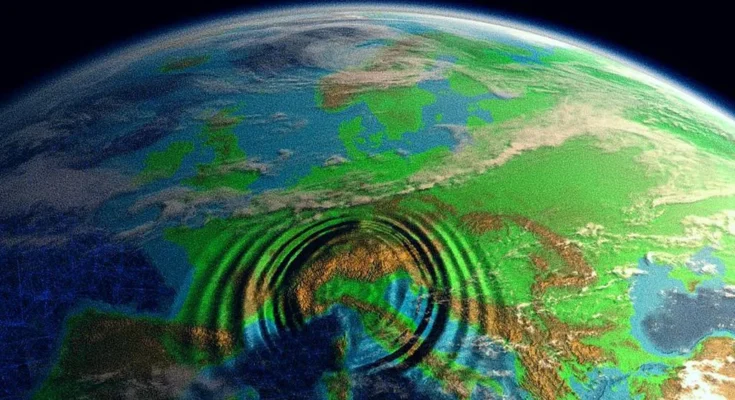Every 26 seconds, Earth emits a strange and steady pulse—a low-frequency vibration that ripples quietly through the ground like a planetary heartbeat. First recorded in the 1960s, this “microseism” is not a fleeting anomaly. It is continuous, consistent, and global—yet its origin remains one of the most curious geological mysteries in science today.

Detected by seismographs, which are instruments used to measure ground motion, this subtle vibration has baffled researchers for over half a century. Unlike earthquakes, which are sudden and violent, this microseism is gentle and rhythmic. It doesn’t stem from tectonic activity or human-made machines. It’s not related to storms or volcanic tremors. Instead, it is natural and persistent, quietly thrumming like a metronome deep beneath our feet.
What makes this pulse particularly fascinating is its clockwork regularity: every 26 seconds, almost without variation. Scientists have traced the likely source of the microseism to somewhere near the Gulf of Guinea, off the western coast of Africa. Yet pinpointing exactly what generates such a reliable signal has proven elusive.
One of the leading theories is that this phenomenon is linked to ocean waves interacting with the seafloor. When waves travel across the ocean and crash into continental shelves or underwater ridges, they can produce pressure on the seabed. This pressure may be transferred into the Earth’s crust, sending low-frequency seismic waves radiating outward. These vibrations travel through rock and are picked up by sensitive instruments all over the world.

In fact, most background noise on seismographs—the kind not caused by quakes—can be traced back to ocean waves. This ambient seismic energy is known as “microseismic noise,” and it’s a normal part of the Earth’s natural hum. However, the 26-second pulse is unusually precise and consistent, setting it apart from the more chaotic noise of wind and water.
Researchers have even proposed that a specific undersea location near the Bight of Bonny, a region within the Gulf of Guinea, might be the epicenter of this global rhythm. A 2006 study by Columbia University geologists pointed to this area, suggesting that the interaction between waves and the ocean floor there could be responsible. The shape of the seafloor and the presence of underwater features might amplify this energy into a pulse that resonates across the planet.

Despite the plausible explanations, no theory has yet been confirmed. The fact that the pulse has continued for decades without any major change only deepens the mystery. Could there be something unique about that specific region of ocean and seafloor? Or are there other forces at play—geological or otherwise—that scientists have yet to fully understand?
The microseism also challenges our perception of the Earth as a static body. Instead, it reminds us that our planet is constantly in motion, even in ways too subtle for human senses. The 26-second pulse is a gentle but persistent reminder that Earth is alive with energy and rhythm, much of which we still don’t fully comprehend.
The search for answers continues, and as seismic monitoring technology improves, researchers hope to uncover more about this steady planetary beat. For now, though, Earth’s 26-second pulse remains one of its most haunting and hypnotic mysteries—a rhythm from the deep, echoing the unknown.
In a world driven by data and discovery, the persistence of such a simple question—“What is causing this?”—offers a humbling reminder: there are still forces in nature that remain hidden in plain rhythm, waiting to be understood.



